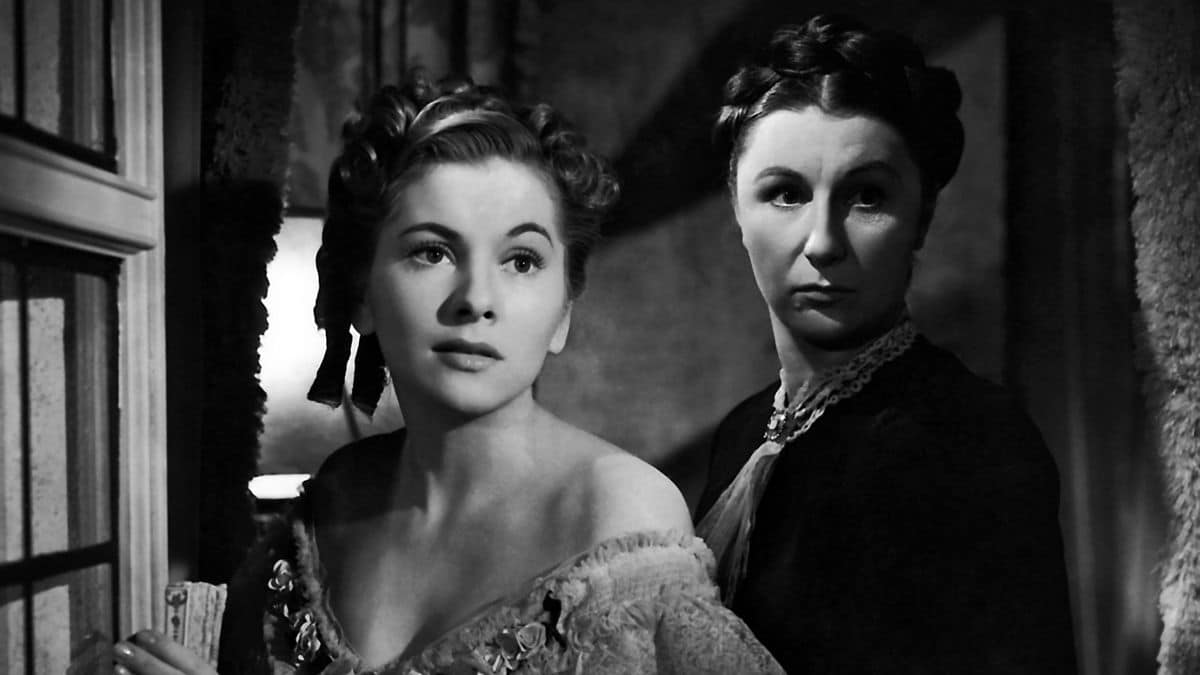
What can we learn by juxtaposing these two classic movies?
A few months ago, I was lucky enough to watch Alfred Hitchcock’s Rebecca and Orson Welles’s Citizen Kane within weeks of each other on the big screen. With the former fresh on my mind as I watched the latter, I couldn’t help but pick up on similarities.
Given that the two films were made within a year of each other — they were released in 1940 and 1941, respectively — they often invite comparison, especially since a foreboding mansion is central to both. In Rebecca, it’s Maxim de Winter’s Manderley, while in Citizen Kane, it’s Charles Foster Kane’s Xanadu.
That specific relationship between the two films is explored in a video by Rob Stone entitled “No Trespassing: From Manderley to Xanadu,” which places the opening and closing sequences from each side by side. Watch it below.
Rebecca and Citizen Kane both begin with foreboding exterior shots of their respective mansions, suggesting, as Stone does in his essay’s title, that we enter the story through trespass.
Rebecca is told from the subjective view of Joan Fontaine’s character, the second Mrs. de Winter. Though she is married to Maxim, played by Laurence Olivier, she is an outsider at Manderley. She lives in the shadow of the first Mrs. de Winter, Rebecca. Surrounded by Rebecca’s objects and constantly reminded of her greatness by Mrs. Danvers, the second Mrs. de Winter is a trespasser in her own home. And since Hitchcock presents the story from her subjective view, so are we.
Citizen Kane actually opens with a “No Trespassing” sign. The notion of trespassing is more or less what prompts the story, since the film is an investigation of the life of Kane (Welles) by the journalist Jerry Thompson (William Alland), the ultimate trespasser. Kane is also a kind of trespasser. He never truly belongs in the aristocratic world that his inherited fortune allowed him to enter into.
Susan Alexander (Dorothy Comingore), Kane’s second wife, is also a trespasser. With Kane’s financial backing, she trespasses into the world of opera, despite having little to no ability. In the scenes of her at Xanadu, we see her again, like the second Mrs. DeWinter, as a kind of trespasser, this time into the life of Kane. She appears out of place, small and insignificant compared to the grand staircases and fireplaces of Xanadu. She doesn’t belong.
Both films also end in fire. Rebecca ends with Manderley in flames, and the final shot is of the embroidered “R” on Rebecca’s pillow being devoured by them. Hitchcock’s ending influenced Welles. The final shot of Citizen Kane is Kane’s Rosebud sled turning to ash in a furnace. The fire, in both cases, brings us a kind of closure. It eliminates Rebecca’s ghost, allowing the couple to be together. And it provides the audience an answer to the question “what is Rosebud?”.
After watching these two films and Stone’s video, I couldn’t help but think more about their similarities. I am excited by videographic criticism because it allows us to reexamine old films in new ways. For us younger film critics, it is sometimes discouraging to watch an old film, fall in love with it, want to write about it, and then realize that there are shelves and shelves of books filled with ideas we thought were original. Video essays and works like Stone’s “No Trespassing” allow us to revisit films like Citizen Kane and learn from them in new ways.
What I also love about video essays in general are their emphasis on exploration. This form allows us to create criticism that perhaps results in more questions than answers. After I watched Stone’s video, I thought to myself, “What happens when we trespass? What happens when we explore the halls and grounds of de Winter’s Manderley and Kane’s Xanadu?” So, I uploaded both films to Adobe Premiere, played around, and made the below video, which has the incredibly original title of “Trespassing: From Manderley to Xanadu.”
The comparisons you see do not create a specific argument about character, theme, the directors, etc. They’re simply shots and sequences that reminded me of one another. I’m curious to hear what folks think, so please comment on Vimeo or tweet at me (@willdigravio) and let me know!
Related Topics: Alfred Hitchcock, Orson Welles, Video

